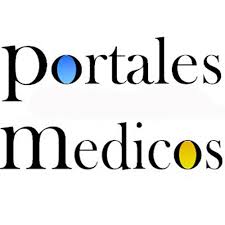Hallazgos oftalmológicos en pacientes embarazadas. Instituto Autónomo Hospital Universitario de Los Andes, 2018-2023
Ophthalmological findings in pregnant patients. Autonomous institute University Hospital of Los Andes, 2018-2023
Resumen
RESUMEN
Objetivo: determinar los hallazgos oftalmológicos en pacientes embarazadas del Instituto Autónomo Hospital Universitario de Los Andes (IAHULA), 2018-2023. Metodología: estudio documental descriptivo, diseño retrospectivo. Se revisaron 654 historias clínicas del servicio de ginecobstetricia en el Departamento de Registro y Estadística de Salud del IAHULA, de las cuales 30 pacientes embarazadas fueron valoradas por el servicio de oftalmología y 100 pacientes embarazadas tenían registrado en la historia clínica obstétrica algún tipo de hallazgo oftalmológico sin valoración oftalmológica por el servicio de oftalmología. Resultados: edad 16 a 37 años (25,80 ± 6,13 años), (50%), el 63,3% fue valorado por el servicio de oftalmología para decidir vía de finalización del embarazo, 90% durante el tercer trimestre, 56,67% multigesta, antecedentes de HTA crónica (6,67%), toxoplasmosis (6,67%); los hallazgos oftalmológicos encontrados por el servicio de oftalmología fueron miopía magna (25,93%) y astigmatismo miópico (18,52%) y los registrados en la historia clínica obstétrica miopía (32,7%), astigmatismo miópico (21,8%), miopía magna (21,8%). El mayor porcentaje de vía de finalización del embarazo fue la cesárea segmentaria por diagnóstico oftalmológico y obstétrico (36,67%) y sin valoración oftalmológica (74%). Conclusiones: los hallazgos oftalmológicos encontrados por el servicio de oftalmología en una de cada cuatro casos fueron miopía magna y en dos de cada diez astigmatismo miópico. En cuanto a los hallazgos oftalmológicos registrados en la historia clínica obstétrica más frecuentes fueron miopía en aproximadamente uno de cada tres casos, seguido de astigmatismo miópico y miopía magna en dos de cada diez pacientes.
ABSTRACT
Objective: To determine the ophthalmological findings in pregnant patients at the Instituto Autónomo Hospital Universitario de Los Andes (IAHULA), 2018-2023. Methodology: Descriptive documentary study, retrospective design. A total of 654 medical records from the gynecology and obstetrics service at the Department of Health Registration and Statistics at IAHULA were reviewed. Of these, 30 pregnant patients were assessed by the ophthalmology service and 100 pregnant patients had some type of ophthalmological finding recorded in their obstetric medical record without ophthalmological assessment by the ophthalmology service. Results: age 16 to 37 years (25.80 ± 6.13 years), (50%), 63.3% were assessed by the ophthalmology service to decide on a pregnancy termination route, 90% during the third trimester, 56.67% multigestation, history of chronic hypertension (6.67%), toxoplasmosis (6.67%); the ophthalmological findings found by the ophthalmology service were high myopia (25.93%) and myopic astigmatism (18.52%) and those recorded in the obstetric clinical history were myopia (32.7%), myopic astigmatism (21.8%), high myopia (21.8%). The highest percentage of pregnancy termination routes was segmental cesarean section based on ophthalmological and obstetric diagnosis (36.67%) and without ophthalmological assessment (74%). Conclusions: The ophthalmological findings identified by the ophthalmology department were high myopia in one out of four cases and myopic astigmatism in two out of ten. The most frequent ophthalmological findings recorded in the obstetric medical history were myopia in approximately one out of three cases, followed by myopic astigmatism and high myopia in two out of ten patients.
Recibido: 11-04-2025
Aceptado: 15-05-2025
Publicado: 04-07-2025
Palabras clave
Texto completo:
PDFReferencias
Anton, N., Bogdănici, C., Branisteanu, D., Armeanu, T., Ilie, O., & Doroftei, B. (2024). A narrative review on neuro-ophthalmological manifestations that may occur during pregnancy. Life, 14(6), 431. https://doi.org/10.3390/life14040431
Ávila, H., Franco, A., y Durán, F. (2022). Hallazgos fundoscópicos en pacientes preclámpticas y eclámpticas. Boletín Médico de Postgrado, 38(2), 65–73. https://doi.org/10.5281/zenodo.6809190
Cubillo, A., y Chacón, B. (2021). Cambios oculares durante el embarazo. Revista Médica Sinergia, 6(9). https://doi.org/10.31434/rms.v6i9.703
Diress, M., Yeshaw, Y., Bantihun, M., Dagnew, B., Ambelu, A., & Seid, M. A. (2021). Refractive error and its associated factors among pregnant women attending antenatal care unit at the University of Gondar Comprehensive Specialized Hospital, Northwest Ethiopia. PLOS ONE, 16(2), e0246174. https://doi.org/10.1371/journal.pone.0246174
Goldich, Y., Cooper, M., Barkana, Y., Tovbin, J., Lee, K., Avni, I., & Zadok, D. (2014). Ocular anterior segment changes in pregnancy. Journal of Cataract & Refractive Surgery, 40(11), 1868–1871. https://doi.org/10.1016/j.jcrs.2014.02.042
Ibarra, A., Rivas, Á., Sánchez, J., Meza, E., y Torres, J. (2024). Cambios oftalmológicos en la enfermedad hipertensiva del embarazo. Revista de la Asociación Mexicana de Medicina Crítica y Terapia Intensiva, 30(1), 43–47. http://www.scielo.org.mx/scielo.php?script=sci_arttext&pid=S0187-84332016000100007
Mackensen, F., Paulus, W., Max, R., & Ness, T. (2014). Ocular changes during pregnancy. Deutsches Ärzteblatt International, 111(33–34), 567–575. https://doi.org/10.3238/arztebl.2014.0567
Marcos-Figueiredo, P., Marcos-Figueiredo, A., Menéres, P., & Braga, J. (2018). Ocular changes during pregnancy. Revista Brasileira de Ginecologia e Obstetrícia, 40(1), 32–42. https://doi.org/10.1055/s-0037-1605366
Martins, T. G., Schor, P., Mendes, L. G., Anschütz, A., & Silva, R. (2022). Eye diseases during pregnancy: A study with the medical data warehouse in the eye clinic of the Ludwig-Maximilians Universität München in Germany. Einstein (São Paulo), 20, eAO6613. https://doi.org/10.31744/einstein_journal/2022AO6613
Mendoza, Z. (2024). Hallazgos oftalmológicos en pacientes embarazadas. Instituto Autónomo Hospital Universitario de Los Andes, 2018–2023 [Trabajo de especialización, Universidad de Los Andes].
Moneta-Wielgos, J., Brydak-Godowska, J., Golebiewska, J., Lipa, M., y Rekas, M. (2018). The assessment of retina in pregnant women with myopia. Neuroendocrinology Letters, 39(4), 321–324.
Morya, A. K., Gogia, S., Gupta, A., Prakash, S., Solanki, K., & Naidu, A. (2020). Motherhood: What every ophthalmologist needs to know. Indian Journal of Ophthalmology, 68(8), 1526–1532. https://doi.org/10.4103/ijo.IJO_2033_19
Naderan, M. (2018). Ocular changes during pregnancy. Journal of Current Ophthalmology, 30(3), 202–210. https://doi.org/10.1016/j.joco.2017.11.012
Organización Mundial de la Salud. (2019). Concientización sobre la preeclampsia. https://www.paho.org/es/noticias/1-8-2019-dia-concientizacion-sobre-preeclampsia
Reddy, S. C., Nalliah, S., George, S. R. A., & Who, T. S. (2012). Fundus changes in pregnancy-induced hypertension. International Journal of Ophthalmology, 5(6), 694–697. https://doi.org/10.3980/j.issn.2222-3959.2012.06.08
Uma, M. S., Bhuvana, S., Annamalai, R., & Muthayya, M. (2022). Visual morbidity and spectrum of ophthalmic changes in pregnancy-induced hypertension. Journal of Family Medicine and Primary Care, 11(6), 2488–2492. https://doi.org/10.4103/jfmpc.jfmpc_2206_21
Zapata, E., Malavé, Z., y Bello, F. (2014). Preeclampsia grave: Cambios en el examen de fondo del ojo. Informe Médico, 16(2), 45–50.
Enlaces refback
- No hay ningún enlace refback.
Depósito Legal Electrónico: ME2016000090
ISSN Electrónico: 2610-797X
DOI: https://doi.org/10.53766/GICOS
| Se encuentra actualmente registrada y aceptada en las siguientes base de datos, directorios e índices: | |||
 | |||
 |  |  |  |
 |  | ||
 |  |  |  |
 |  |  |  |
 |  |  |  |
 |  | ||
![]()
Todos los documentos publicados en esta revista se distribuyen bajo una
Licencia Creative Commons Atribución -No Comercial- Compartir Igual 4.0 Internacional.
Por lo que el envío, procesamiento y publicación de artículos en la revista es totalmente gratuito.

